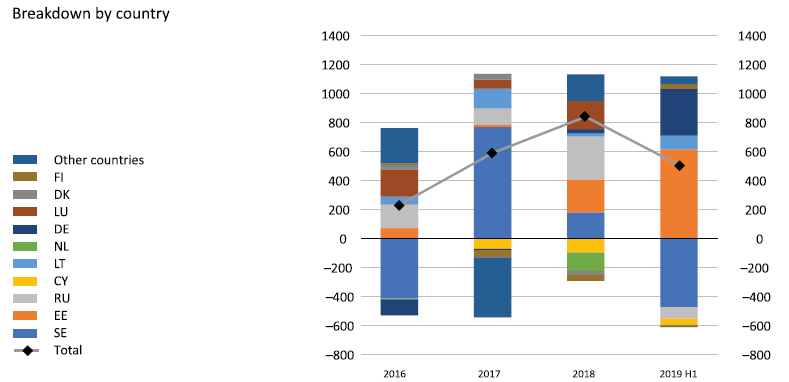Latvia's Macro Profile. January 2020

Latvia's Economic Developments and Outlook
Economic growth losing speed
Similar to the global economy, Latvia's economy also decelerated in 2019. According to Latvijas Banka, Latvia's GDP is projected to grow by 2.3% in 2019 and by 2.6% in 2020. This is broadly unchanged in comparison with the September forecasts. GDP growth has been revised slightly downwards for 2019 owing to changes in historical data following a data revision by the Central Statistical Board of Latvia. Growth projections for 2020 have remained unchanged.
In 2019, global uncertainties have weakened Latvia's external demand as well as contributed to a more subdued domestic demand, particularly clearly manifested in investment activity. It is also reflected in a lower demand for imports of intermediate and capital goods. Export growth is decelerating under the impact of weakening external demand. At the same time, Latvia's exporters have remained resilient targeting niche markets, and this should be viewed as an advantage providing room for manoeuvre.
Looking by sector, economic growth has become more even in 2019 despite an overall slowdown which is particularly strong in previously flourishing sectors like construction. In manufacturing, the performance of technologically advanced sub-sectors and manufacture of metal products remains solid, whereas the growth of the wood industry is additionally dampened by falling prices and a higher supply as this year forests suffered quite a lot damage from insect infestation. The record-high grain harvest in 2019 supported exports of the agriculture sector. Retail trade has weakened significantly in household articles' group of goods, pointing to more cautious spending behaviour of households. The financial sector recorded comparatively lower profits in 2019. The negative contribution of transportation by rail and through ports stemming from weaker international trade and re-routing of Russian cargoes was to some extent offset by investment in transportation by air and successful development of this sub-sector.
Bank lending remains sluggish
The additional accommodative monetary policy measures adopted by the Governing Council of the European Central Bank have enhanced the favourable financial conditions, yet bank lending remains sluggish in Latvia. At the same time, the ongoing financial sector reforms could result in a larger focus on satisfying the financing needs of the economy and improve the attractiveness of Latvia's investment environment in the long term. Latvia's commitment to the fiscal framework set by the European Union currently does not enable implementation of additional measures to stimulate the economy.
Wage growth remains high
Despite the economic deceleration, high demand for labour and limited supply remain the main drivers of the labour market development. Consequently, unemployment continues to shrink and wage growth remains high.
Latvia's inflation rate is slightly higher than the euro area average
Income convergence is reflected in Latvia's inflation which is slightly higher than the euro area average. According to Latvijas Banka's projections, inflation is expected to decelerate from 2.8% in 2019 to 2.4% in 2020. In comparison with the September forecasts, inflation has been revised slightly downwards primarily due to oil price developments.
Macroeconomic indicators – actual data and forecasts
Latvijas Banka's forecasts, December 2019
FDI inflows in Latvia (millions of euro)


Macroeconomic Indicators: Latvia, Lithuania and Estonia









* The effect of reclassifications and other adjustments have been deducted.
Textual error
«… …»

